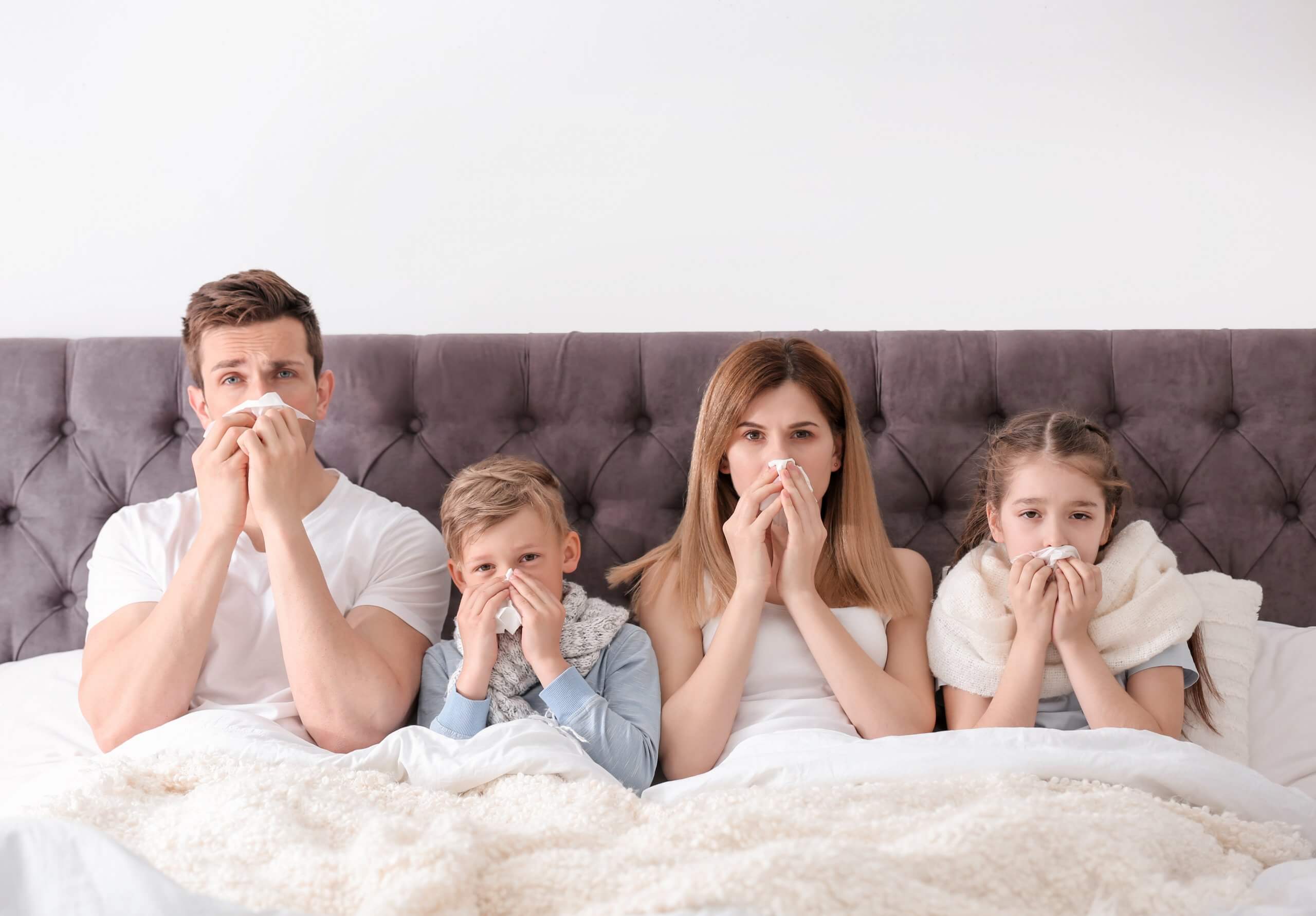With spring behind us and the summer season here, you might think that allergies are a thing of the past. Spoiler alert: pollen isn’t the only source of seasonal allergies. Depending on where you’re located, you might be entering a season of humidity and related indoor summer allergens. Learn what they are and the indoor air quality solutions designed to prevent indoor pollutants from affecting your home’s air.
Sources of Indoor Summer Allergies
“People always forget that there’s still year-round, indoor allergens, such as dust mites, mold and animal dander,” said Dr. Purvi Parikh, an allergist and immunologist with Allergy & Asthma Network in an article by Shape.
Dust mites, mold and pollen not only thrive, but intensify in hot and humid environments, wreaking havoc on those with allergies. Pet dander is also a threat year-round, especially assuming the pet lives indoors. “I would argue, depending on where you are, some of those things might be worse in the summer,” explained Dr. Parikh. “Dust mites and mold thrive off of humidity, and some places can get quite humid in the summertime.” Here’s a breakdown of how indoor summer allergies affect our bodies.
Dust Mites
Mere millimeters in size, these microscopic organisms are invisible to the eye. Dust mites take the moisture they need to live directly from the air, feast on skin cells (found in dust!) for protein and lay their eggs in skin cell dust. They flourish in high humidity environments, and really thrive in 70%+ relative humidity. They tend to colonize where moisture levels remain high, like on your pillow or bed linens. Breathing in dust mite fecal matter is what causes allergic reactions. Nightmarish, we know.
Dust mites are actually in their healthiest state in the summertime. They’re the indoor allergen most likely to cause symptoms in the summer, says Dr. Sally Joo Bailey. https://t.co/rqS3w1eMQP
— U.S. News Health (@USNewsHealth) June 22, 2021
Mold
Mold spores are fungi, that similar to dust mites, thrive in the same high humidity environments. The difference is the effect they have on our homes. Once mold finds an ideal location in your home to grow, like a dark and humid basement, they colonize. From there, mold spores circulate through your home’s air. If you have a mold allergy and breathe in mildew or spores, your immune system kicks into overdrive.
Dander
Pet dander is simply the skin scales your animal sheds, much like how our skin sheds. The difference between human and pet dander is the secretions from pet skin glands. Those secretions have allergens attached to them that humans can be sensitive to. As these circulate in our indoor air, they enter our body and can trigger allergies.
Best Indoor Air Quality Solutions for Summer Allergies
To stave off these indoor summer allergies inside your home, you need a clean air strategy. With the help of your local HVAC or IAQ expert, you can determine the best solutions to keep you and your family healthy.
What are healthy home habits? They are tips and tricks to improve #IAQ and create a cleaner healthier space … that should be practiced routinely ⏱️ #healthyhomehttps://t.co/rSawFvkKwr
— IAQ Works | #HealthyIndoors (@IaqWorks) March 22, 2021
Helpful and effective whole-home solutions include:
Active Air Purification
Installed directly into your home HVAC system, this style air purifier sends air scrubbers throughout your home’s ductwork and into every room. The technology seeks, destroys and reduces the overall amount of dust, allergens and mold circulating in your air supply.
Filtration
MERV 13 or HEPA filtration systems are the first line of defense against mold, dust mites and dander indoors. They capture pollutants circulating through your HVAC system, preventing them from triggering an allergic reaction.
Dehumidifier
Whole-home dehumidifiers work to remove excess moisture from the air. By keeping your space’s indoor relative humidity between 40 and 60%, you’re preventing dust mites and mold from growing and spreading.
After a professional home assessment, you and the expert may decide that you only need one of these solutions. Other spaces may require two, or even all three products, to keep your indoor air healthy. There’s no one answer, because every home is unique. Regardless, choosing to start today, reaching out to a local expert and intervening with healthy home habits, is the best way to start.




